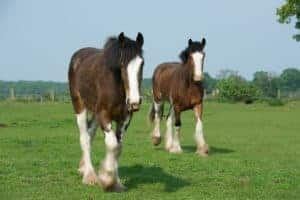Feeding Frequency Affects Gastric Ulceration in Exercised Young Horses

We know that exercise intensity and duration are key contributors to equine gastric ulcer risk. Long periods between meals also increase a horse’s chance of developing gastric ulcers. This is especially true when these infrequent meals contain a high percentage of starch-based concentrate feed. But what happens when you compare the results of a common twice-a-day schedule to much more frequent feedings in population of study horses?
Luke Bass, DVM, MS, Dipl. ABVP, and his team at Colorado State University’s (CSU) College of Veterinary Medicine & Biomedical Sciences, in Fort Collins, aimed to determine the effects of two feeding strategies on exercising horses’ gastric ulceration, body weight, and body condition. Bass presented their findings at the 2017 American Association of Equine Practitioners Convention, held Nov. 17-21 in San Antonio, Texas.
He explained that horses have a natural grazing pattern in which they eat for many hours a day. Their natural diet is made up predominantly of highly fibrous forages. However, many performance horses are housed in stalls and consume high-starch concentrate feeds to meet the increased caloric demands associated with training and competition. These feeding and management practices are in part to blame for the increased incidence of gastric ulcers and colic seen in this population of horses
Create a free account with TheHorse.com to view this content.
TheHorse.com is home to thousands of free articles about horse health care. In order to access some of our exclusive free content, you must be signed into TheHorse.com.
Start your free account today!
Already have an account?
and continue reading.

Related Articles
Stay on top of the most recent Horse Health news with

















